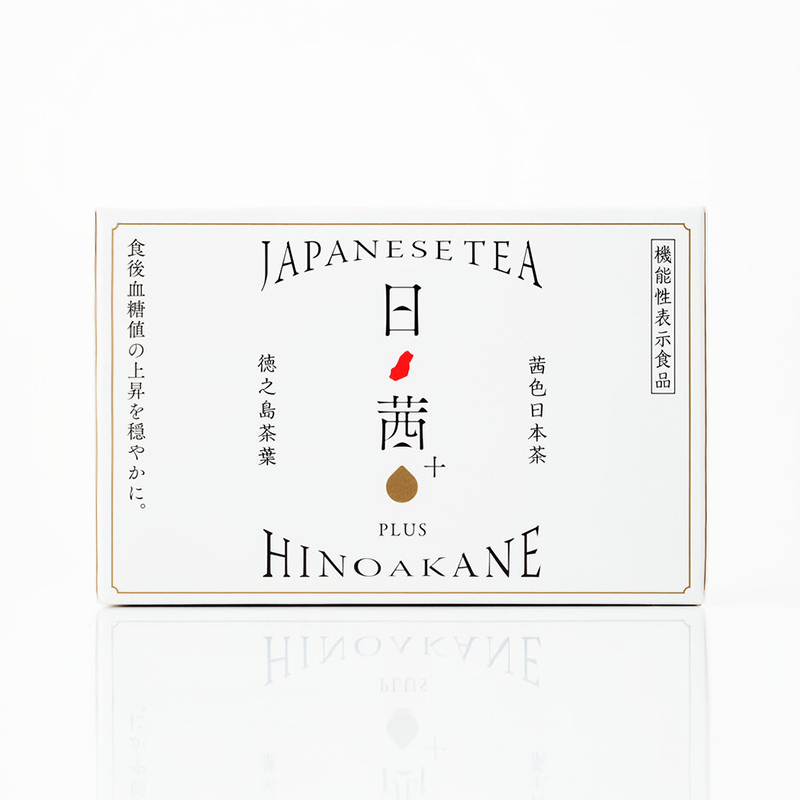 Sale is ending soon
Sale is ending soon
Hinoakane Japanese Tea
Hinoakane Japanese Tea
AZUMA CHEMICAL CO.,LTD ⭐⭐⭐⭐⭐
 Star Seller. This seller consistently earned 5-star reviews, shipped on time, and replied quickly to any messages they received.
Star Seller. This seller consistently earned 5-star reviews, shipped on time, and replied quickly to any messages they received.
 Returns & exchanges accepted
Returns & exchanges accepted
- Your order will be shipped within 48 hours
Couldn't load pickup availability
This is a green tea made using Sun Rouge tea leaves from Tokunoshima Island in Kagoshima Prefecture. It contains catechins (epigallocatechin gallate), flavonols, and other polyphenols, as well as anthocyanins. It also has the potential to help control post-meal blood sugar spikes. When lemon juice is added, it changes to a reddish color.
Share








Features
Type: Green Tea
Origin: Tokunoshima, Amami Islands, Japan
Weight: 3.5g/pack, 20 packs (70g)/box
Caffeine: Medium
-

Organic
-

Nutritious and Healthy
-

Natural
-

Rich in Anthocyanins

A Ruby Revolution in Green Tea
Sun Rouge Tea isn't your average cup of green. This innovative Japanese creation boasts a unique origin story and therapeutic properties.
Sun Rouge is the result of a meticulous breeding program. Scientists crossed the Camellia taliensis plant with the Okumusashi tea tree variety, yielding the Chachuukanbohonnou 6 cultivar, rich in anthocyanins. Sun Rouge was officially registered as a new tea variety in 2011.
This ruby-hued tea offers a unique twist on the traditional green tea experience, promising not just flavor but potential therapeutic benefits.

A Rare Ruby of Green Tea
While Sun Rouge's therapeutic benefits are impressive, it remains relatively lesser known and challenging to find in the market. It thrives exclusively on the small island of Tokunoshima, situated approximately 100 kilometers north of Okinawa in southern Japan. This secluded location offers the perfect subtropical climate and volcanic soil necessary for the cultivation of this extraordinary tea.
Hinoakane Japanese Tea, also known as Sun Rouge Tea, is distinguished by its high levels of anthocyanins, a rare class of polyphenols not typically found in green tea. The tea's deep red-purple leaves owe their vibrant color to these abundant anthocyanins. The name "Sun Rouge" (with "rouge" meaning "red" in French) reflects the tea's intense hue, reminiscent of a delicate lipstick when illuminated by sunlight.
The processing method of Sun Rouge Tea differs from traditional Japanese green tea as it involves pan frying instead of steaming. This pan-frying process results in dried leaves that resemble pan-fried Chinese green teas in appearance. However, the dry leaves of Sun Rouge are darker than many other pan-fried green teas. This dark color is due to the presence of anthocyanins, which can range in color from red to purple or blue depending on the pH level. These compounds are responsible for the vibrant hues seen in various fruits and vegetables, such as eggplants, blueberries, raspberries, and pomegranates.
When brewed, the color of the liquid varies based on the type of water used, resulting in a range of colors from bright pink to colorless to purplish-gray. The color may change gradually over time, influenced by factors like water type, temperature, and steeping time. Using hard water may cause sediment to appear, similar to the sediment found in well-aged red wine. This sediment results from the interaction between the polyphenols and ions in the water, but it does not impact the human body.
When brewed with regular water, Sun Rouge tea typically yields a light pink color with a slight grayish tint. However, adding a few drops of lemon juice transforms the color into a more intense pink hue. Similarly, acids like apple cider vinegar or carbonated beverages can also cause color changes. This transformation is due to the interaction between the high anthocyanin content in Sun Rouge and the acidity of the water. These unique coloring properties make this innovative green tea an excellent choice for creating beautiful gradient-colored tea cocktails.
-

Relieves Eye Fatigue
-

Protects Blood Vessels
-

Antioxidant
-

Anti-Inflammatory

Health Benefits
Sun Rouge green tea is rich in catechins (epigallocatechin gallate), flavonols (myricetin 3-galactoside), and rare anthocyanins (delphinidin 3-galactoside). These powerhouses may unlock a range of potential health benefits, from improved vision and reduced inflammation to overall wellness. Studies suggest Sun Rouge might even support weight management, blood sugar control, and even cancer prevention.

Flavor
Apart from its remarkable health benefits, Sun Rouge also offers a delightful taste experience. It boasts fruity, herbal, and nutty aromas, with a slightly bitter yet sweet aftertaste. The flavors include grassy and peppery notes, distinct saltiness, and herbal freshness. There is a subtle hint of seaweed-like marine aroma and mild astringency from its mineral accents. The tea has a smooth infusion with a rich aroma reminiscent of the tropics, carrying strong floral scents and hints of tropical fruit, complemented by subtle touches of pickled plums.
















